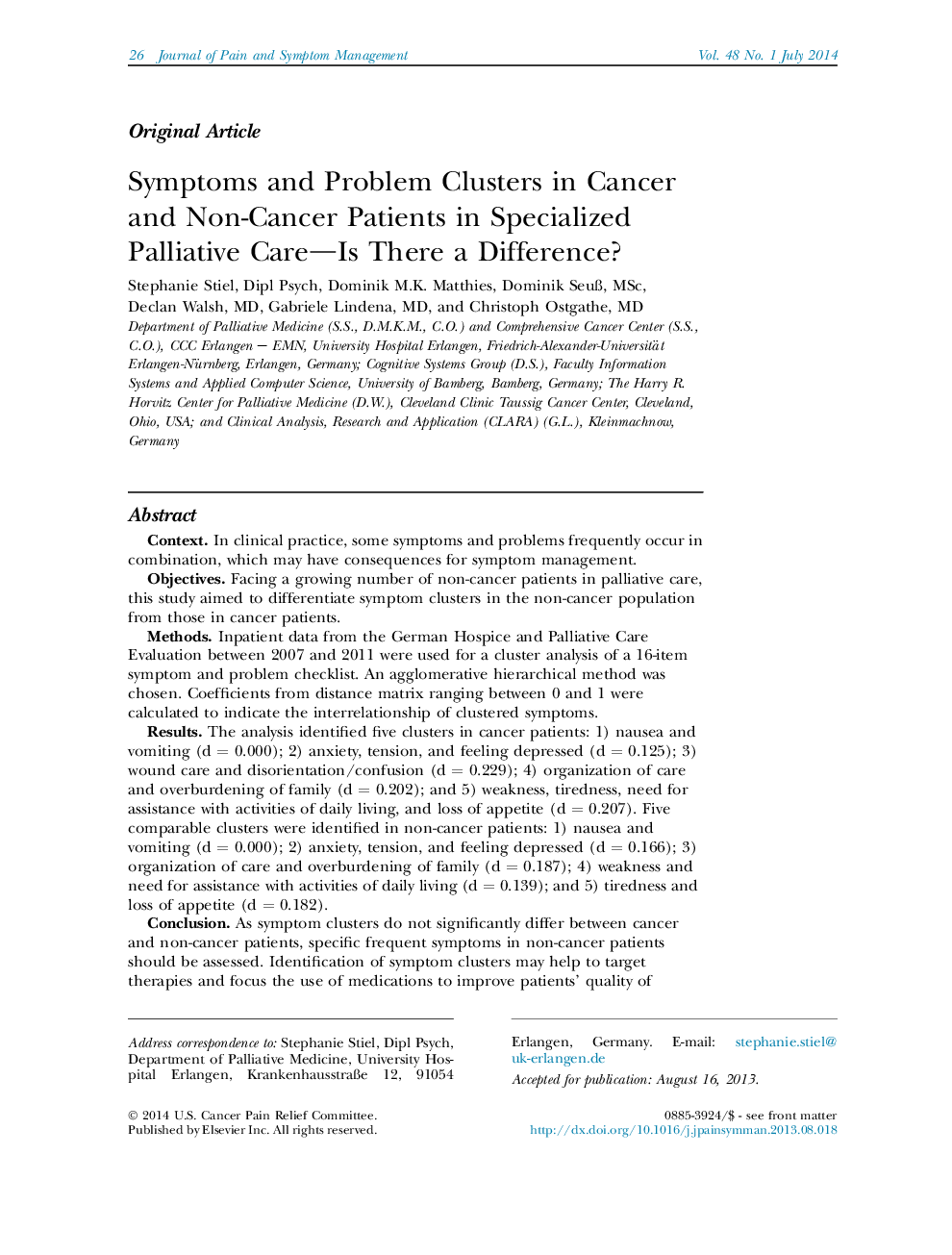| Article ID | Journal | Published Year | Pages | File Type |
|---|---|---|---|---|
| 2729915 | Journal of Pain and Symptom Management | 2014 | 10 Pages |
ContextIn clinical practice, some symptoms and problems frequently occur in combination, which may have consequences for symptom management.ObjectivesFacing a growing number of non-cancer patients in palliative care, this study aimed to differentiate symptom clusters in the non-cancer population from those in cancer patients.MethodsInpatient data from the German Hospice and Palliative Care Evaluation between 2007 and 2011 were used for a cluster analysis of a 16-item symptom and problem checklist. An agglomerative hierarchical method was chosen. Coefficients from distance matrix ranging between 0 and 1 were calculated to indicate the interrelationship of clustered symptoms.ResultsThe analysis identified five clusters in cancer patients: 1) nausea and vomiting (d = 0.000); 2) anxiety, tension, and feeling depressed (d = 0.125); 3) wound care and disorientation/confusion (d = 0.229); 4) organization of care and overburdening of family (d = 0.202); and 5) weakness, tiredness, need for assistance with activities of daily living, and loss of appetite (d = 0.207). Five comparable clusters were identified in non-cancer patients: 1) nausea and vomiting (d = 0.000); 2) anxiety, tension, and feeling depressed (d = 0.166); 3) organization of care and overburdening of family (d = 0.187); 4) weakness and need for assistance with activities of daily living (d = 0.139); and 5) tiredness and loss of appetite (d = 0.182).ConclusionAs symptom clusters do not significantly differ between cancer and non-cancer patients, specific frequent symptoms in non-cancer patients should be assessed. Identification of symptom clusters may help to target therapies and focus the use of medications to improve patients' quality of life.
